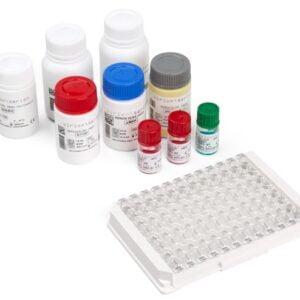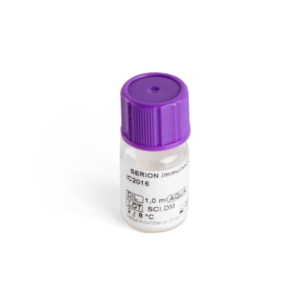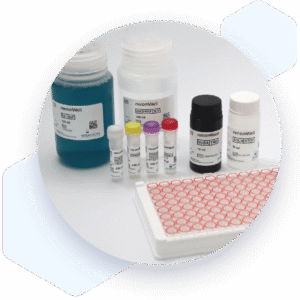| Weight | 1 lbs |
|---|---|
| Dimensions | 9 × 5 × 2 in |
| target | Borrelia burgdorferi reactive IgM |
| species reactivity | Borrelia burgdorferi (lyme disease) |
| applications | ELISA |
| assay type | Indirect & quantitative |
| available sizes | 96 tests |
Borrelia burgdorferi IgM ELISA Kit ESR121M
$364.00
RF-Absorbent Z200 for use with IgM ELISA kits
Did you know that RF Absorbent Z200 is recommended for the removal of IgM rheumatoid factors from serum and plasma samples prior to the detection of pathogen-specific IgM? Consider adding it to your cart for improved signal specificity. For more details, please refer to the IgM ELISA kit protocol.
- Virion/Serion Diagnostic Kit for research use (RUO)
- Borrelia burgdorferi IgM ELISA Kit
- Suitable for IgM detection
- Ready-to-use
- 96 tests
Borrelia burgdorferi IgM ELISA Kit ESR121M
| kit | ||||||||||||||||||
|---|---|---|---|---|---|---|---|---|---|---|---|---|---|---|---|---|---|---|
| Assay type Indirect ELISA | ||||||||||||||||||
| Research area Infectious Disease | ||||||||||||||||||
| Sample type Serum, plasma, whole blood | ||||||||||||||||||
| Notes Pretreatment of samples with RF-Absorbent (Z200) is recommended for use with IgM ELISA kits to eliminate presence of sample rheumatoid factors and possible false negative results. | ||||||||||||||||||
Components
| ||||||||||||||||||
| Storage Store at 2-8°C. | ||||||||||||||||||
| Associated products Bordetella pertussis Filamentous Hemagglutinin (FHA) Antigen (BA120VS3) Bordetella pertussis Toxin Antigen (BA120VS4) Bordetella pertussis whole cell Antigen (BA120VS8) Bordetella pertussis Toxin Human IgA Assay Control (BC1201A) Bordetella pertussis IgA Control Serum (BC120A) Bordetella pertussis IgG Control Serum (BC120G) Bordetella pertussis Toxin IgA ELISA Kit (ESR1201A) Bordetella pertussis Toxin IgG ELISA Kit (ESR1201G) Bordetella pertussis IgA ELISA Kit (ESR120A) Bordetella pertussis IgG ELISA Kit (ESR120G) Bordetella pertussis IgM ELISA Kit (ESR120M) |
| target relevance |
|---|
| Organism Borrelia burgdorferi |
| Protein names Borrelia burgdorferi |
| Structure and strains Borrelia burgdorferi is a bacterial species of the spirochete class in the genus Borrelia, and is one of the causative agents of Lyme disease in humans. Along with a few similar genospecies, some of which also cause Lyme disease, it makes up the species complex of Borrelia burgdorferi sensu lato. The complex currently comprises 20 accepted and 3 proposed genospecies.B. burgdorferi sensu stricto exists in North America and Eurasia and until 2016 was the only known cause of Lyme disease in North America. Borrelia species are Gram-negative. |
| Detection and diagnosis Due to the complexity of the clinical picture and the generally unspecific symptoms, serology is the appropriate method to ensure an optimal diagnosis. It is recommended to adopt a logical step-wise approach for serological diagnosis, initially using a sensitive screening assay with subsequent confirmation by another specific test. |
Data
Publications
| pmid | title | authors | citation |
|---|---|---|---|
| We haven't added any publications to our database yet. | |||
Protocols
| relevant to this product |
|---|
| ESR121M protocol |
Documents
| # | ||
|---|---|---|
| Please enter your product and batch number here to retrieve product datasheet, SDS, and QC information. | ||
Only logged in customers who have purchased this product may leave a review.





Reviews
There are no reviews yet.